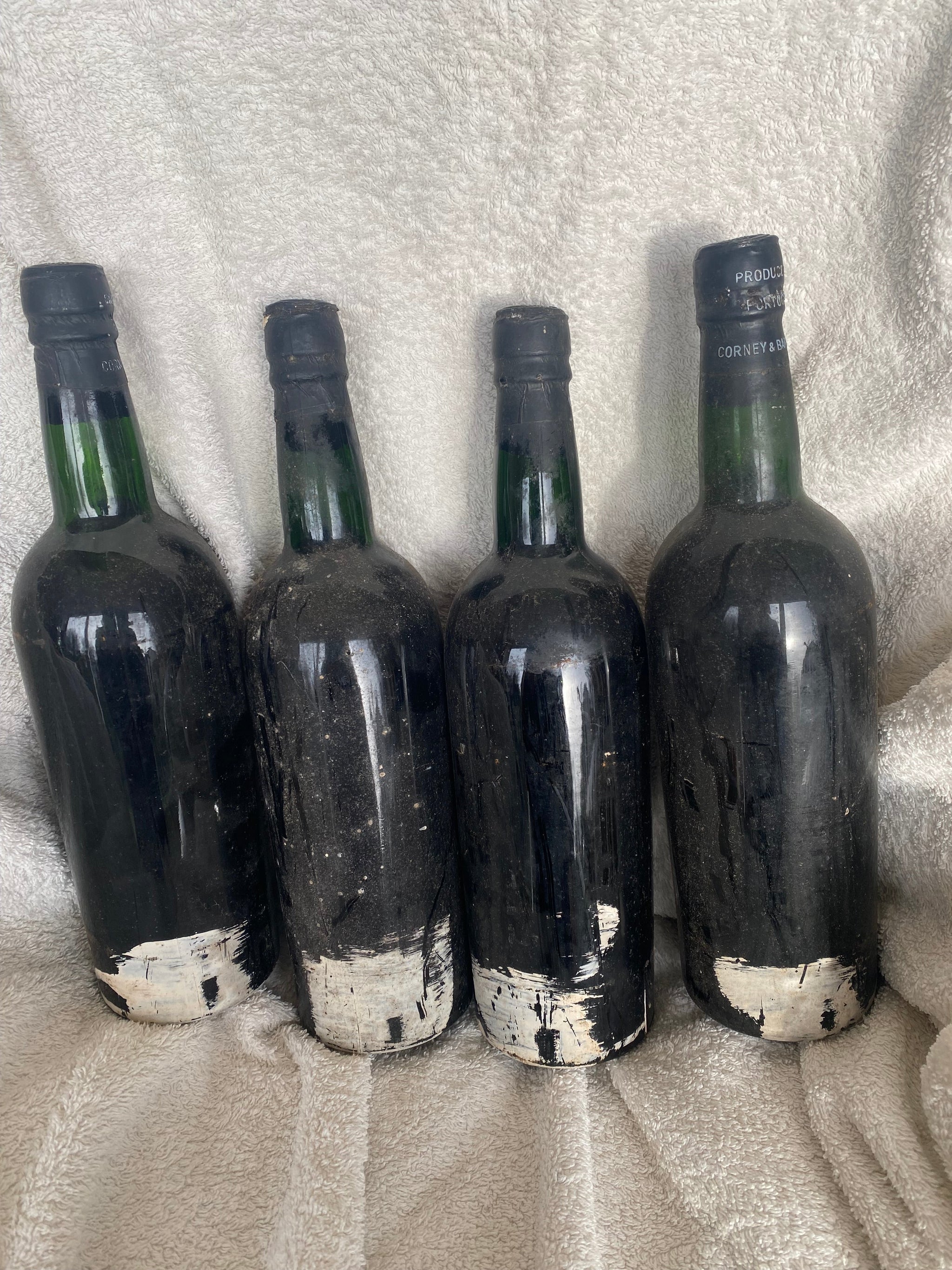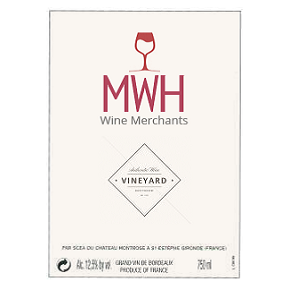Pétrus: The King Of Bordeaux?
When it comes to naming the finest wine in Bordeaux, one name is consistently put forward. Whether your tastes are for Left or Right Bank wines, you’re looking for elegance or exuberance, power or nuance, there is one property that is always placed above all others: Pétrus.
Chateau Pétrus: A Little History
This tiny property started life as a 7-hectare plot and thanks to its purchase of part of Gazin is currently just 11.4 hectares - for context Lafite is 112 hectares. It lies on a slight rise in the eastern part of the diminutive appellation of Pomerol (just 800 hectares all-told). For centuries it, as well as the rest of the commune, was largely unknown. Its reputation, such as it was, was for creating passable, uninspiring white wines for the Dutch and German markets and it remained a sleepy, un-regarded backwater. Visiting Pomerol, even today, isn’t the most inspiring of jaunts. While the wines are world-class the landscape is distinctly drab.
Fittingly it was Pétrus that drew the world’s attention to the region. In 1878 it won a gold medal at the Paris Exhibition Universelle, a stunning achievement and one which catapulted the little property from obscurity. Initially sales were limited to France and Belgium where much of it was bottled, chateau bottling being something that wasn’t to become commonplace until after World War Two. However, in 1945 Pétrus took a step which was to turn out to be a great leap forward. The distribution rights were acquired by Jean-Pierre Moueix of the Libourne négociant house, Établissements Jean-Pierre Moueix.
Working hand in hand with the meticulous owner, Madame Loubat, it was soon being exported to the US it was quickly taken to be the wine of choice for the well-heeled. Legend has it that the likes of Jackie Onassis and Frank Sinatra were early adopters. What can be said for certain is that with US buyers rushing to it, the price soared.
Troubled Times: Frost, Oil, Decline
In 1956 its remarkable rise was threatened by the great frost. On a February night temperatures plunged to as low as -17C. Having had a few days of unseasonably mild weather, the sap had begun to rise and froze, splitting trunks and killing vines throughout the region. Many were left with no choice but to replant which, in some cases, was to their long-term benefit as more suitable varieties were planted. Loubat, however, treasuring her aged stock refused and instead coppiced her vines – a move that allowed the property to recover sooner and as the vines continued to age so the wines continued to improve. Old vines are treasured at Pétrus to this day and the gnarled, bulbous trunks reflect the average vine age which now said to be around 70 years of age.
The early 1970s saw another significant event – this one somewhat further away. The oil crisis of the early 1970s coincided with a run of dreary vintages in the Medoc. With US consumers in particular feeling the pinch, the prospect of paying big prices for poor wines (the Bordelaise wanted big money for 1972s, 1973s and the awful 1974s) they looked elsewhere for wine and Pomerol – on the back of Pétrus – gained further attention.
The late 1970s saw a rare wobble in Pétrus’s fortunes. While the 1975 was a triumph despite the tricky conditions, 1976-1984 (with the notable exception of 1982) saw wines that often dipped below their own extraordinary high standards. Some have speculated that the addition of the vines from Gazin (acquired in 1969) took time to be integrated or that the delayed replanting from 1956 was at fault. Either way, while these wines may not be top draw by Pétrus’s standards, they are still fine wines.
Fast forward to 1989 and Pétrus found form the likes of which no one had seen before. 1989 and 1990 gained 100-point scores and preceded a run of classics including 1994, 1995, 1996, 1998 1999, 2000, 2001, 2003, 2005, 2008, 2009, 2010, 2015, 2016, 2018 and 2019. Though it would have seemed impossible to say even 20 years ago, it seems that Petus is just getting better and better. A run of exceptional vintages, investment in the winery and an even keener attention to detail have yielded outstanding returns.
The Vineyard
Pétrus’s 11.4 hectares lay at the eastern end of the commune and sit on a small rise. Given the elevation across the commune is only 20m. it really is the slightest of summits but it makes a huge difference. Its soils are locally unique and are known as the ‘Pétrus' buttonhole’ with both topsoil and subsoil high in iron-rich clay. It used to be planted with 95% Merlot, the rest being given over to Cabernet Franc, but since 2011 it has been 100% Merlot.
With the possible exceptions of nearby neighbours Le Pin and Lafleur and the somewhat further afield Masseto, few Merlot-based wines can come close to matching Pétrus for power, complexity, age worthiness and exotic style.
What’s Pétrus Taste Like?
Obviously describing any wine that’s been produced over hundreds of vintages is difficult. Though as with Lafite (refined, elegant, nuanced) or Mouton (powerful, exuberant, exotic) some stylistic traits are identifiable. In youth it is invariably powerful, deeply coloured and display notes of Asian spices, cherries, mocha, grilled meats, and violets. With time these notes are aided and abetted by tones of blackberry, raspberry, minerals, and dried rose petals. Tasting Pétrus is always a privilege, but its only when tasted alongside other great Pomerols – Vieux Chateau Certain, Lafleur, Latour a Pomerol or even its near neighbour, Le Pin – that the class really shows.
Is Pétrus Worth The Money?
With an average price on WineSearcher of £3,100 a bottle – a cost that’s reduced by years such as 1979, 1984, and 1992 – it’s not cheap and its out of most wine lovers’ reach. £3,100 is an astonishing amount of money for a bottle of wine. But with production tiny, investors snapping up classic vintages like 1990, 2000 and 2009 in the expectation of big returns and with enough millionaires and billionaires to drink these wines, its likely that the prices will continue to rise. If you can afford it, then its arguable that it is worth it. It is unique. Its site, winemaking and vine age make it first amongst equals in the same way that Yquem, Romanee Conti and Krug rank above their legendary peers.
Which Pétrus Vintages Are Worth Trying?
Given its extraordinary quality practically all vintages are of worth drinking, but given the price we’d recommend giving the likes of 1973, 1974, 1977, 1981 and 1983 a miss. Most other years are outstanding with the best of recent ones being 1982, 1986, 1989, 1990, 1995, 1999, 2000, 2003, 2005, 2008, 2009, 2010, 2015, 2016, and 2019. The frequency of brilliant offerings underlies how good this property is.
Like Some Fine Wine Help?
We hope you found this blog of interest, but if you are looking for a specific wine then please get in touch by calling Mike on 0118 984 4654 or by emailing MWH Wines.

